Department of Low Vision
Low Vision = Useable Vision
The person is said to have low vision when conventional spectacles, contact lens or medical and surgical intervention cannot improve vision and finds difficulty in daily routine activities in everyday life Everyday tasks, such as reading, shopping, cooking, watching television and writing can seem challenging.
Vision is a complex sense with an ability to perceive details, color, and contrast and distinguish objects. These capacities can diminish with advancing age or can occur because of any eye diseases or ocular trauma or birth defect.
There are varieties of eye diseases affecting vision, depending on site of their involvement some common problems are
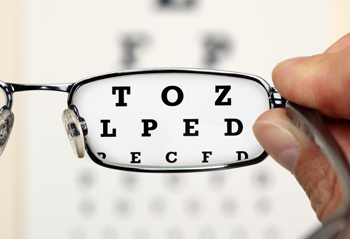
Low vision is useable vision
What is Low Vision?
Low vision is diminished sight with minimal ability to see that is unresolved or uncorrected with traditional eyeglasses, contact lens, intraocular lens implants, or corrective surgery. However, in some cases, persons with low vision may be aided with special visual devices and vision training.
What are the causes of Low Vision?
 Vision can diminish due to advancing age, ocular trauma, birth defect or any eye disease.
Vision can diminish due to advancing age, ocular trauma, birth defect or any eye disease.
Corneal injury or damage: It results in a clouded image and increased glare sensitivity. Reading print appears hazy and may also result in a reduction in contrast.
Glaucoma: Elevated eye pressure over a long period can cause optic nerve damage and loss of peripheral field of vision. Print appears faded, words are difficult to read and contrast is reduced.
Degeneration/Dystrophy):
 Diabetic Retinopathy: Long standing diabetes can affect the macula or the entire retina by leaking of retinal blood vessels. The patient can have variable amount of vision and print may appear distorted or blurred with patchy shadows while reading.
Diabetic Retinopathy: Long standing diabetes can affect the macula or the entire retina by leaking of retinal blood vessels. The patient can have variable amount of vision and print may appear distorted or blurred with patchy shadows while reading.
Congenital disorders & birth problems like Rubella or Albinism can also lead to Low Vision.
What Visual handicap people with low vision feel?
- Difficulty in recognizing a familiar face or street sign
- Difficulty in near tasks like reading, writing, sewing etc.
- Difficulty in picking out and coordinating the color of clothes
- Lights seem dimmer than usual
What are the Types of Low Vision?
- Reduced Peripheral Vision
- Reduced Central Vision
- Reduced ability to adjust to light, contrast and glare
What is Low Vision Evaluation?
A Low Vision specialist performs comprehensive functional and clinical vision evaluation using special charts and devices. Low vision devices are prescribed as per the individual needs. After complete low vision evaluation it provides vision rehabilitation for training to effectively use the low vision devices and residual vision.
What are Low Vision Devices (Aids)?
These can be categorized as optical or non-optical devices.
Optical Devices
These use lenses or combination of lenses to provide magnification. They are available in many types and different powers.
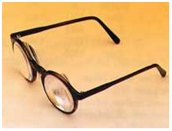 Magnifying Glasses: Available in different powers ranging from low to high. They are useful for reading, writing and can be worn as normal reading glasses.
Magnifying Glasses: Available in different powers ranging from low to high. They are useful for reading, writing and can be worn as normal reading glasses.

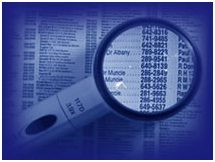 Stand Magnifiers: Rest on reading material and are also available with inbuilt illumination.
Stand Magnifiers: Rest on reading material and are also available with inbuilt illumination.
 Telescope These are used for distance magnification, like looking at boards in classroom or watching television. They are available as spectacle mounted or hand held.
Telescope These are used for distance magnification, like looking at boards in classroom or watching television. They are available as spectacle mounted or hand held.
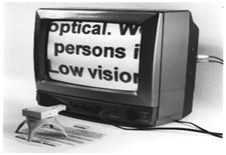
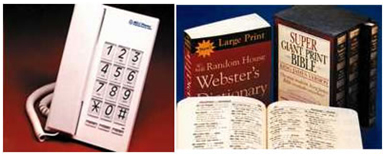 Non-optical devices These are the devices where no lenses are used . These devices can optimize the use of optical devices. Enlarged prints are one of the types which produce large images eg. Are large print magazines, calendars, calculators etc.
Non-optical devices These are the devices where no lenses are used . These devices can optimize the use of optical devices. Enlarged prints are one of the types which produce large images eg. Are large print magazines, calendars, calculators etc.
Other adaptive devices are: Instrument that provide voice instruction (i.e. computers, calculators, telephone),bold felt tipped pen, dark pencils, Absorptive Lenses, Good illumination adjustable lights and stands
Large print telephones, books, illuminated watches, clocks etc.
A comprehensive low vision evaluation will help persons with low vision maximize their residual vision to usable vision.







